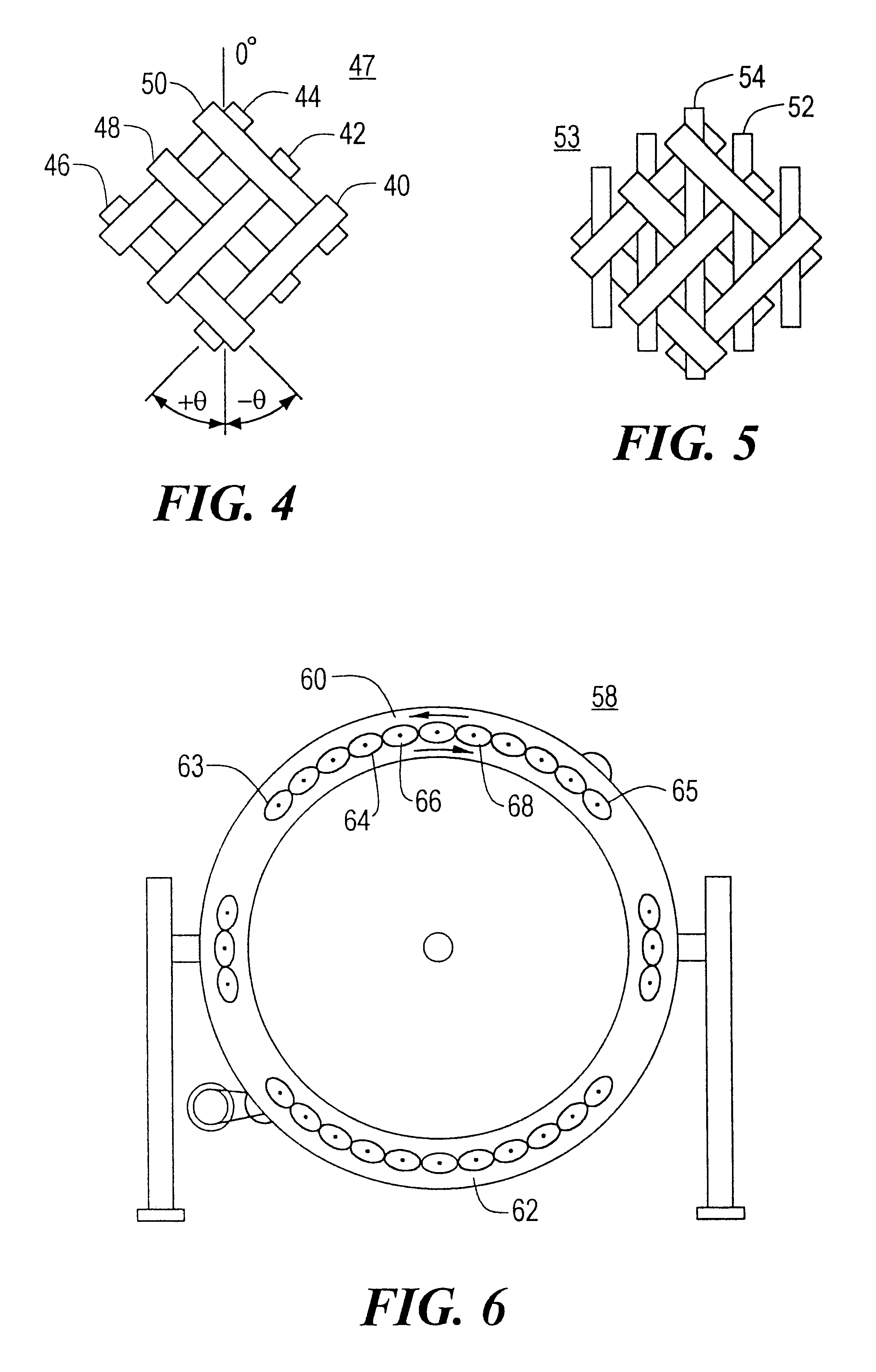Continuous intersecting braided composite structure and method of making same
a composite structure and intersecting technology, applied in the direction of braiding, textiles and papermaking, dyeing process, etc., can solve the problems of increasing weight, labor, cost, and difficulty in joining together, and achieve the effect of strengthening a composite part at the intersection of one structural member
- Summary
- Abstract
- Description
- Claims
- Application Information
AI Technical Summary
Benefits of technology
Problems solved by technology
Method used
Image
Examples
example 1
The applicant developed and optimized a composite design for the F-22 carry-through bulkhead using the intersecting structures technology discussed above.
The F-22 FS 610 bulkhead was selected as the baseline component from which to derive a composite replacement design. This particular component is a highly loaded carry-through member, and it reacts the main landing gear loads. As such, it was a significant challenge compared to more lightly loaded frames, which are not directly loaded from wing bending.
The baseline bulkhead design, made from titanium, was taken from LMTAS F-22 engineering data to serve as a starting point for the composite design. The design problem was simplified by eliminating the landing gear attachments and loads. The simplified metallic design maintains the same basic stiffening configuration as the full version. Critical loading cases were also obtained for use in the structural analysis tasks. These omitted landing gear loads. The internal arrangement of sti...
PUM
| Property | Measurement | Unit |
|---|---|---|
| intersecting structure | aaaaa | aaaaa |
| structures | aaaaa | aaaaa |
| shapes | aaaaa | aaaaa |
Abstract
Description
Claims
Application Information
 Login to View More
Login to View More - R&D
- Intellectual Property
- Life Sciences
- Materials
- Tech Scout
- Unparalleled Data Quality
- Higher Quality Content
- 60% Fewer Hallucinations
Browse by: Latest US Patents, China's latest patents, Technical Efficacy Thesaurus, Application Domain, Technology Topic, Popular Technical Reports.
© 2025 PatSnap. All rights reserved.Legal|Privacy policy|Modern Slavery Act Transparency Statement|Sitemap|About US| Contact US: help@patsnap.com



